Week 12- Location, Location, Location  There is one P of the marketing mix we haven’t really touched on yet and that is Place. This comes in two different forms for the Indie author – where to sell your books and where to promote them. We’ll start with where to sell. There are a lot of Indie authors (and other people) who get very snooty about Amazon. Because it is so big and because its owner is so rich, they take a “stand against the man” and won’t trade with them. OK. You’re entitled to your view and I respect it. But let me tell you something. In 2019 Amazon accounted for 47% of all self-published books sold in the world, in all formats. That leaves all the others (Kobo, BookNook, Smashwords, Lulu, et al) dividing up the other 53% between them. No matter what your favourite platform, it is never going to match Amazon in terms of market share. "it is never going to match Amazon in terms of market share"  Amazon are shy about revealing details of how many Kindles have been sold, but the estimates are between 20 million and 90 million. Some of those will probably be shared between users. There is no data that I can find on how many times the Kindle app has been downloaded, but it is available to everyone who has a digital device if they fancy reading a Kindle book. That is an estimated 5.2 billion phone handsets and an estimated 1.14 billion tablets. Trust me, Amazon aren’t paying me to tell you these things. I’m just providing the data and you can make your own decisions. Can you really afford not to be on Amazon? Can you really afford not to link your book to Amazon if you are already on there? OK, that’s just going to make Amazon bigger, but it is in the hands of the other retailers to try and compete with Amazon, but right now they aren’t even in the game, let alone inside the stadium and fighting for a win. 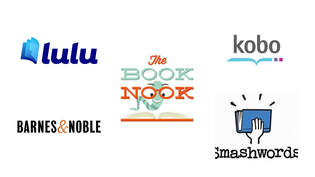 I’m not saying that you shouldn’t be on the other platforms. It makes sense to be everywhere you can, but the most likely place for your book to sell is the Big A. One of the advantages of some of the other platforms is that some of them allow the author to offer coupons and other ways to provide discounts and free books to readers. You can do this on Amazon but it is far harder. For example, we passed a milestone for a number of followers on Twitter, so we Tweeted a Smashwords coupon code for a 100% discount on one of our books that was only valid for 24 hours. We got several downloads (and lots of new Twitter followers) and then a couple of sales from people who missed the cut-off time for the coupon but decided they wanted to read the book anyway. We couldn’t have done that with Amazon. 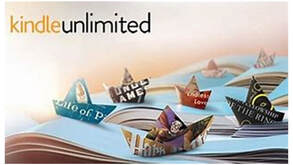 Amazon’s Kindle Unlimited (KU) programme is the biggest subscription service/lending library for Indie books. This puts the Indie author into a bit of a quandary. Because it is part of KDP’s T&Cs that you can’t enrol your eBook on KU if it is published on another platform. Sneaky, I know. So, you now have to try to work out whether you are going to be financially better off by not enrolling in KU and selling through multiple platforms, or whether your sales on other platforms aren’t worth you being there, so it is better to be on KU instead. That’s not always an easy choice to make.
books. That is part of your market research. For example, women are more likely buy Kindles than men – but men are more likely to become permanent Kindle users than women, if they have one. Maybe it is just that women buy the Kindles as gifts for men in the first place, but I have no evidence to back up that supposition. The good news is there’s room for some trial and error. You can enrol your book in KU at any time, so if you aren’t making sales on the other platforms you can de-list the book and enrol it on KU instead. It’s harder to unenroll from KU as you have to wait until the end of a 3 month period and if you miss the date it will auto-enrol you for another 3 months.  Now, which social media platforms are you going to use to reach your target audience? We touched on this in earlier blogs but it is time to take a more in-depth look. The demographics of social media usage varies from platform to platform. Those that are better for visual images, especially video, tend to be more popular with young people. The ones that allow you to “tell a story” in words, like Facebook, are more used by people in the 30 to 50 age group. This is going to affect your choice of platform and your choice of messages. You can be on all of them, of course, but you are going to waste some of your effort by concentrating on the wrong ones. Platform usage also varies from country to country, so here’s some stats:
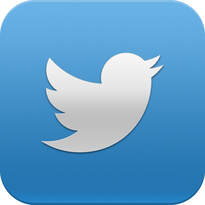 From that you might assume that the UK is all on Twitter. You would be wrong. When you look at the actual number of users it goes FB (38 million), Insta (28 million) then Twitter (17 million) so the place to be seen would appear to be FB. The same applies to the USA (310m, 95m and 68m). What makes it more difficult is that these numbers change every year. Those are the ones for 2020. Who knows where people will be by the end of 2021. But what this means is that if you are targeting a global population for your books, you can analyse data like that and decide which platform is going to be best for you to concentrate on in that country. In both the USA and UK, it is most definitely FB, not Twitter. This becomes even more significant when it comes to spending money on advertising (a topic for a later blog), then clearly you are better off spending your hard-earned cash on FB advertising, not Twitter, because FB can reach more people. "In both the USA and UK, it is most definitely FB, not Twitter. "  Facebook's founder, Mark Zuckerberg Facebook's founder, Mark Zuckerberg Of course, that takes us back into the world of personal politics because a lot of people don’t like Mark Zuckerberg and don’t want to make him any richer than he is. On the other hand, those same people want to sell books. Whatcha gonna do? You can slice and dice the data in a number of other ways. For example, is your target audience college educated? If yes, then more college educated people use Facebook than Twitter. Is your ideal reader a high-income earner? Then Facebook is also the place for you. On all 3 platforms the largest proportion of users is amongst the higher income bracket, but on FB it is a massive 74% of high-income earners. That is to say, of all those users of social media who are high income earners, 74% will use FB but only 31% will use Twitter. "You can slice and dice the data in a number of other ways" Where did all that data come from? It came from this website, to which we provided a link in a previous blog. The data relates mainly to users in the USA, but there is no reason to suggest that the data doesn’t transpose to the UK, especially when you look at that number of users for the different countries that are shown above.  Market research companies allow some of their data to be accessed, which can be helpful. For example, on the Yougov website (registration is free) I discovered that fans of Bernard Cornwell are more likely to be male, over 55, interested in history and politics and follow the news and, when it comes to reading, they want to find a series that “they can dive into for a while”. Now that I know that age bracket, I can find out which social media platform they are most likely to use and target them on that and I know what sort of messages they are going to be interested in reading and engaging with. OK, the amount of data I got from Yougov wasn’t that much, but they make their money by selling data, not giving it away for free. Having registered with them I’ll probably be bombarded with emails inviting me to take out a subscription. I may not need to, because the insights I got from them without paying were high value in terms of audience profiling.  Best-selling author Bernard Cornwell Best-selling author Bernard Cornwell Why Bernard Cornwell? Well, I’m a fan. But I could have got similar data for the readers of authors of any genre of book that we publish. Because their fans are probably the people we want to target for advertising. As you can see this is, again, very time-consuming stuff. If you are juggling family, work and being an author, you haven’t got much time leftover for marketing. Well, I don’t want to pressure you, but you can always find someone who can do some of it for you. Yes we will take a share of your royalties, but a share is better than no royalties at all. In the next edition of this blog we’re going to look at the one place where you may be tempted to spend some money – advertising. Is it something an Indie author should be considering? If you have enjoyed this blog and found it informative, make sure you don't miss future editions by signing up to receive our newsletter. Just click the button.
0 Comments
Week 11 - What Price Fame?  Best-selling author Bernard Cornwell Best-selling author Bernard Cornwell In September this year, Bernard Cornwell is bringing out a new “Sharp” novel and to pre-order it for Kindle will cost you £14.99. So, as a self-published, Indie author, what price should you set for your next masterpiece? Let’s look at the economics of pricing a book. Publishers, even quite small ones, have costs they must cover: rent, utilities, editing, proofreading, marketing, distribution, “back office” staff etc. All of these costs have to be recovered and, to help the company’s balance sheet, they like to recover those costs within the financial year in which the book is published. To keep the shareholders happy, the company also needs to make a profit. "the author needs to make a living" Then the author needs to make a living, so some income for the author has to be factored into the price, which also has to take into account the percentage that will be paid to the author’s agent, anywhere between 10% and 20% of the author’s royalties (the author pays the agent, not the publisher).  Finally, a well-known author like Cornwell has a loyal fanbase who are eagerly awaiting this book and who are prepared to pay top price in order to be amongst the first to read it. You have seen a similar effect with fans queuing to be the first to be the owners of the new iPhone or PlayStation. Put those three things together and you get the price that is being asked for “The New Sharp Novel” as it somewhat bizarrely titled (I suspect that’s just a placeholder until Cornwell decides what the title will be). Once the publisher has recovered their initial costs, usually after a year, they start to reduce the price of the book while maintaining the level of royalties they pay to the author. You can pick up most of Cornwell’s back catalogue as eBooks for around £6.99. The price of the hardback is usually reduced when the paperback is released, perhaps 6 months after launch. Even paperback prices are reduced over time. 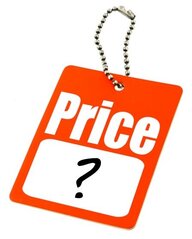 So, how much do you think you should charge for your books? Firstly, you don’t have most of those overheads. You have expended time to write the book and you may have paid for some services, such as editing or cover design, you may also have to pay for some marketing activity, but those costs are miniscule when compared to those of a major publisher. Interestingly you can make the same royalties, per copy, for your book charging quite a modest price as Bernard Cornwell will at £14.99 a pop. The difference in income between you and him is that he will sell hundreds of thousands of copies, but you will probably be doing well to sell a few hundred copies. At least, until you are better known. I don’t know why you got into writing, but if it was to become a millionaire, you are barking up the wrong tree. According to this research, the average annual royalties for an author in the UK in 2018 was a fraction over £16,000. The top 10% of authors earn 70% of all royalties. These are the big, well-known names. A statistician will tell you that it is the top 10% that is keeping the average as high as it is. I’ll just to do the maths for you: if you price your book to pay you £3 per copy in royalties, you have to sell 5,300 copies to make the average annual income – without taking your other costs into account. The mode (that’s statistics jargon meaning what the largest number of authors earn) is much lower than the average. It’s less than £11k, or 3,700 sales. "If you want to make money don't become an author, become a publisher." So, even if you can climb to the dizzy heights of earning the average income for an author, you will struggle to live on it. By comparison, the 2020 UK average wage was a fraction over £30k. It is interesting to note that many of the authors who are signed to mainstream publishers are probably earning less than their editors. They are certainly earning less than the middle ranking managers in the publishing company. If you want to make money don't become an author, become a publisher.  The big money for authors isn’t in selling books; it is in selling the TV and film rights to their books. Not only do they go for a large lump sum (and probably a “percentage of the gross”), they also catapult book sales into the stratosphere. It should be remembered that the first print run for “Harry Potter and the Philosopher’s Stone” (Sorcerer’s Stone in the USA) was only 500 copies, 300 of which went to libraries. It took two years to sell 300,000 copies in the UK. You need to sell around 100,000 copies to make it to the Sunday Times best-sellers list.  But that hasn’t answered the question: for what price should I sell my book? The answer is, it’s up to you. Some authors believe in setting a low price, hoping to sell more copies. Others set a higher price because they place a higher value on the content. I don’t believe in setting too low a price. I think the readers look at the price and say “If it’s that cheap it can’t be very good” and pass it by. Besides, if you want to drop the price to boost sales, perhaps ahead of the release of a sequel, then you have nowhere to go. "When you sell on Amazon, they set a minimum price" When you sell on Amazon, they set a minimum price (some other platforms also do that). The minimum price is what Amazon thinks they deserve for allowing you to use their platform, which includes delivery via their internet channels. Above that you can sell at whatever price you wish. We set a price of between £2.99 and £4.99 depending on the length of the book. That gives a total royalty between £1 and £3 (approx) per copy. But that is shared 50:50 with the author. 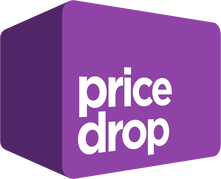 As suggested, there are times when we reduce the price. Amazon will allow us to do that once per title every three months, for up to 5 days per quarter. We will take advantage of that if we want to stimulate interest in a series ahead of the next book being released. Amazon also allows a book to be given away for free using the same parameters and we have also done that. What do the experts say? Well, we came across this article which seems to cover the main points.  Now to Kindle Unlimited (KU), Kindle Select and Kindle Lending Library. These are three names for pretty much the same thing. Readers pay a subscription to these services (they also get it free with their Prime subscription) and the income for that (after Amazon has deducted its fees) is pooled. Every time a reader downloads and reads a book, the author gets a share of the pool. This is currently about 0.5p per standard page (ie standard Kindle sized page) read. So, if your book is 300 pages long and the reader reads it all the way through, you will earn about £1.50. Depending on the sale price, that may be less than if they bought the book. 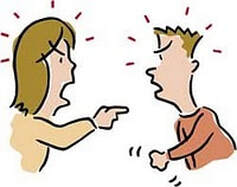 Because of this disparity, there is a difference of opinion about whether to allow your book to be listed on these services (you do have a choice). Part of that is because the big names don’t use these services. But there’s a reason they don’t use them – it takes too long for them to recover their overheads. But Indie authors don’t have that problem. “But if they download my book for free, I won’t make so much money.” is the usual objection. But you will make some money and if they don’t download your book for “free” you don’t make any money. Let me give you an example. If someone sees a film on Amazon they want to watch, but they also subscribe to Netflix, are they going to buy the film from Amazon? No, of course they aren’t. They’re going to download it for “free” from Netflix. The same applies to these other subscription services. The reader may be interested in your book, but if they can’t download it for “free”, they’ll pass it by and find one they can. Just so you know, Amazon’s Kindle Unlimited paid out over $250 million (quarter of a $ billion) to Indie authors in 2019. It currently accounts for 14% of all books read. So, we enrol most of our titles in those programmes, unless the author asks us not to.  By the way, if you are a KU subscriber and you download a book but don’t finish it (for whatever reason), don’t just stop turning the pages. Please keep clicking through until the end. That way the author gets the full share of the pool for that book. It’s a small thing, but it is a good thing to do to help other Indie authors and it costs you nothing. Giving away books for free - other than through the subscription services - is something we are reluctant to do. The thinking is that the free book will raise the author’s profile and the reader will buy other titles by the same author. We have little evidence that, for example, giving away the first book in a series will encourage a new reader to buy the second book. There seems to be plenty of readers who are only interested in free books and will take them, but that is all they do. We don’t even know if they actually read them. It’s a bit like a pub giving away a beer brand for free for a period as a promotion. The drinkers will take the free beer for as long as it lasts, but they won’t necessarily buy it when it’s sold at its normal price. They often go back to their usual tipple.  We do give away one title for free every Christmas as a good will gesture. It’s called “An Alternative Christmas Carol” and it gets a lot of downloads. Strangely, when we take it off free offer after Christmas, we often sell a couple of copies. Bizarre! You can find out more about "An Alternative Christmas Carol" by clicking on the link, but if you want it for free you'll have to come back at Christmas. So, that’s pricing for you. If you think you can sell at a high price – try it, but don’t be surprised if readers don’t buy the book. Better to be modest when you start out (< £5) and increase your prices later when you have established your reputation. One final tip: never make your price a whole number of £s (or other currency). For some reason customers prefer to see .99 at the end of a price. We know - it doesn't make sense to us either, but it makes sense to customers and the customer is King (or Queen). If you have enjoyed this blog and found it interesting, make sure you don't miss out on future editions by signing up to our newsletter. Just click the button. Week 10 - I Hear What You’re Saying  It doesn’t matter how many people you engage with on social media, if the messages you send them aren’t clear, they won’t buy your book. So that is the subject of this week’s blog – coming up with clear marketing messages. There are a number of ways to create content and creative people are coming up with new ways all the time. But we’ll start with the basics and you can get creative yourself once you have got the idea. If you’d like to do some training in this topic, our old friends at Future Learn offer an online course that is (yay) free and you can sign up for it anywhere in the world. We recommend it. For this blog we’re going to look at two specific types of content.  You will recall, all the way back in Week 2 of this blog, I mentioned the “elevator pitch”. I said that it wasn’t much good for approaching an agent, but it did have its uses elsewhere. Well, this is “elsewhere”. If you haven’t read that blog and don’t know what an elevator pitch is, it’s a short description of your book, designed to catch the attention of a potential audience in a very short space of time – typically the duration of a ride in an elevator, hence its name. Elevator pitches aren’t unique to the publishing world. They can be used in any interaction where you need to get an idea across quickly and concisely. Imagine you are at a party and you find yourself in conversation with a stranger. “What do you do for a living?” They ask.  “I’m an author.” you reply (because you are if you want to sell your books, no matter what you actually do to earn a living). “Oh, that’s interesting.” They say, because this is a party and they feel obliged to make small talk. “What sort of books do you write?” “Well, my latest book is …” And you launch into your elevator pitch, which is basically your book’s description in thirty to sixty seconds. Then you pause. If their eyes have glazed over and they change the subject, let it drop – don’t bore them to death with it. But if they say “Oh, that sounds intriguing,” They may ask you more and you can feel free to elaborate until they run away screaming.
there are so many available on the internet already. This is one I found quite quickly. If you don’t like that one, there are plenty more where that came from. But that elevator speech is your basic marketing message for use on social media because it is concise and easy to understand. If you can get it down to 280 characters, then it’s ideal for Twitter, but if you can’t then it can still be used on other social media.  Here’s a trick for Twitter. Turn your message into a picture. Use Powerpoint (other graphics packages are available), put your elevator pitch into a text box, insert the cover image alongside it and save it as a .jpg (image) file. All you need to do then is upload it into your Tweet and add a link so that anyone interested can click through to its retail page on whatever platform you are using for sales. But, of course, you can also use the same “slide” for other social media. But you don’t have to stop there. If you can set up a series of slides you can join them together and make them into a video using packages such as “moviemaker”. Or you can make some actual videos with yourself or family members in them. These are ideal for use on Youtube and Instagram (you could actually video yourself in a party situation, in conversation with a “party guest”). I have what is known as a “good face for radio”, which is a euphemism for being ugly, so I wouldn’t want to be in a video, but there’s nothing wrong with my voice, so I can do a voiceover for a video made up of slides 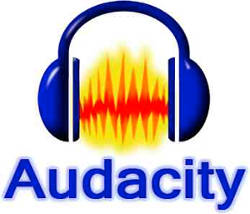 Some music helps and you can find stuff to download for free on this website. You can also find some sound effects there. You may want to edit the soundtrack or music clip, and there is a package called Audacity which can also be downloaded for free. It isn’t easy to use, so be prepared to take some time to learn how. With Audacity you can also create and edit your own podcasts and you can upload them to sites such as Spotify for Podcasters. (other websites for podcasters are available). But if you are going to do a podcast, you are going to need a lot more material than just your elevator pitch.
available on some retail platforms. Your elevator pitch provides the intro, to “hook” the listener and then the extract reels them in. I think you can see that this is all very time consuming, which is why small publishers want 50% of your royalties if you sign with them. If you are a full-time author you may have time to do all this marketing, but if you have a day job and a family to juggle, then it becomes more challenging. But if your books aren’t selling and you aren’t doing some (or all) of this stuff, then that may be one of the reasons. "But if your books aren’t selling .... that may be one of the reasons."  Next, I’m going to take a look at your book’s “blurb”. The blurb is the book’s description that appears beneath the cover image on the retail website and will also appear on the back cover of a hard copy book – or maybe on an inside page. You will find a lot of blogs about writing elevator pitches, but not nearly so many about writing blurbs. That’s because elevator pitches are mainly considered as being a tool to catch an agent’s eye. If you do that, they will find you a publisher and publishers have people who are paid to write blurbs, so the author doesn’t need to know how to do it. But you are here, reading this blog, which means you haven’t got an agent, nor a publisher who employs a blurb writer. So, you need to know how to do this for yourself. Imagine yourself walking along the street and you happen to glance sideways through a window before looking back to where you are going. After a fraction of a second your brain catches up with your feet and says “Hang on, there was something going on in there, but I don’t know what.” Well, that is the elevator pitch. Now you go back and take a proper look through the window and see someone being attacked with an axe. That is the blurb. 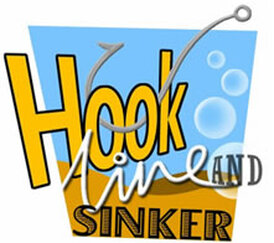 Like the elevator pitch, the blurb has to be concise. If it starts to go on too long the reader will lose interest and move onto another book. But it also has to tell the reader that this is a book that they will enjoy reading, which means it can’t be too short. We found this blog that provides some useful tips. They tie in well with an approach using a fishing metaphor: hook, line and sinker (it’s also the titles of the books in a trilogy by Len Deighton, but that’s another story - sorry, pun intended).  The hook is a short, snappy statement designed to catch the eye, just like the hook catches the fish (that would make the elevator pitch the “bait”). This is the sort of thing we mean: “When you’re up to your backside in alligators, it’s hard to remember that the object of the exercise was to drain the swamp.” That sort of sentence excites all sorts of questions, not least, “what does it mean?”. Thinking about your own book, what sort of short, snappy sentence or couple of sentences could you come up with that would catch the eye? Typical romance ones usually focus on unrequited love. Crime thrillers mention the bizarre nature of a murder. The hook for one of our author’s books, Operation Absolom, is “There’s an old saying in the Army, ‘Never volunteer for anything’. It has been said many times, so why on Earth did Steven Carter ignore it?” Straight away you get two things from that: The book has something to do with the Army, and also the main character’s name. But he obviously volunteers for something that he later regrets – but what is it? If you have to find out what he volunteered for, you are "hooked".  The “line” is where you flesh out the plot and characters for the reader. It will be about a paragraph in length, saying enough to keep the interest going, but not so much that you are giving the book away for free. That’s why it needs to be limited a to a paragraph in length – probably no more than 100 words. Returning to Operation Absolom, here’s the “line” we used: “After volunteering for the Army Commandos, Carter finds himself cut off in enemy occupied Norway. It’s winter, it’s cold and the enemy is hunting for him. Can he survive against all these odds? Even if the Nazis don’t capture him, can he find a way back to England?” So, now we know what Carter volunteered for and why he may now be regretting it. We are also setting up the background against which the story is told – Nazi occupied Norway. Finally, we are asking a “cliff-hanger” question – will the hero escape? If the reader wants the answer to that question, they know what they have to do.  People like to read books similar to the ones they have already read and enjoyed. It is a comfort to them – even if it is frustrating for new authors. So, if you can compare your book to well-known books that the reader may have enjoyed, it tells the reader that they might enjoy this one as well. So, the “sinker” is “If you enjoy the stories of (inset well-known author’s name) and (insert another well-known author’s name) then you will love (insert book title) by (insert author’s name). You can jazz that final paragraph up a bit more if you want, by saying things like “tenser than …. more dramatic than …. more tear jerking than ….” etc. But you don’t have to name authors. You can just use a well-known title or even a film or TV series. Our blurb for “The Deputy Prime Minister” compares it to “House of Cards” and “The West Wing”. Amazon, who know a bit about book marketing, suggest a word count of about 150 for a blurb. That’s only a target, of course, but it gives you something to aim for.  The whole idea of the blurb is to encourage the reader to “look inside” ie start reading the book, just as they might if they were standing in a bookshop with the book in their hand. If you succeed you have a better than 50:50 chance of the reader buying the book. Let’s face it, if you have got the reader this far, the only reason for not buying the book is that, based on the ‘look inside’, they don’t like it or they think it is poorly written. Which is the other main reason your book may not be selling. It doesn’t matter how much marketing you do, if the reader doesn’t like that ‘look inside’ bit, they aren’t going to buy your book. But that is for you to reflect on.
you want, but it’s not so easy to refresh your blurb. Basically you have to republish your book, so taking your time to work on your blurb is time well spent. Why not try it out on your beta readers as well? Send them two or three versions and see which one they prefer. They might even be able to suggest improvements.
Like your elevator pitch, your blurb can be used on social media. It is quite well suited for Facebook, for example, with a link to the book’s retail page so the reader can ‘look inside’, or perhaps to a website where they can get a free extract, as discussed in last week’s blog. Your blurb can be turned into a video and used as the introduction to an extract in a podcast. If you know how to do it, you could even produce an animation. The limit is your own imaginations and skills – and how much you are willing to spend on software packages. We would advise keeping things simple (and free) to start with, then perhaps re-investing some of your royalties later, once you have sold some books. Talking about selling, what should be the price of your book? That’s what we take a look at next week. If you have enjoyed this blog and found it informative and you don't want to miss an edition, make sure you sign up for our newsletter. Just click the button below. Week 9 - Timing Is Everything  Imagine, if you will, that you are a British author, but for reasons we won’t go into, you are living in Australia. Your books are aimed at a British audience mainly. Australians may read them as well (you hope they do), but when you were sitting writing your book, you had visions of busy London streets, leafy Surrey lanes or majestic Scottish glens. Q. You want to use social media to tell your British readers about your new book. When is the best time for you to post on social media? A. When your audience is awake and using social media, of course. Ah, but you are in Australia, which means that when your audience is awake, you are asleep and vice versa. That is going to present a problem. But that is an extreme example. There are, however, many different times when different people are online and knowing when your audience is online is critical to your social media marketing campaign.  Nurses, who work shifts, don’t get much time for social media while they’re at work, so they use social media when they finish their shift, which could be midnight, 6 a.m. or the middle of the day. But if your target audience includes nurses, you will want to be posting to social media at the time they are using it. Think about it – when do toy manufacturers advertise their toys? When they know children will be watching TV. Yes, we know that it’s the adults who buy the toys, but it’s the kids who pester the life out of the parents to buy them.
sporting events, of course – but also when people are getting back from the pub after having one drink too many and not wanting to go to bed just yet (ah, the good old days). The timing of your messages has to be just as targeted. It’s no good knowing who your target audience is and what they are interested in, if you are in bed when they are on social media. There is a myriad of information on the internet that can help you to identify the best times of day to use different social media platforms and even what days are best and which are worst (Saturday isn’t a good day for Twitter, apparently).  You’ll have to do some digging (Well, you didn’t think we were going to do it all for you, did you?) OK, we’ll help a bit. This website shows what times to post in generic terms, but doesn’t give you much insight into such things as age, employment, gender etc. There are plenty of blogs on the subject on that website, dig around a bit and you should find what you are looking for. Here’s a couple of facts for you. A post on Facebook is most read during the first 1½ hours after posting. After that the number of people who will see it starts to dwindle towards zero. 75% of the people who will see it, will view it in the first 5 hours after posting.
minutes. Yes, 24 minutes after you post your Tweet, fewer and fewer people will see it. On Twitter, 75% coverage is achieved after 3 hours. That’s why timing is so important.  These statistics are vital for engagement. If you want to stay engaged, you have to be there when people see and respond to your post, especially on Twitter. If you go back the next day, or even later the same day, the world has moved on already. That’s why you have to be careful of claims such as “We have a gazillion followers to whom you can Tweet”. Very few of that gazillion will ever actually see your Tweet. A portion (of unknown size) of that gazillion followers will actually see it and out of that portion, 75% of them will see it in the first 3 hours after posting. That could mean that only ten people from your target audience will actually see it. The rest of the gazillion just aren't interested or will never see the post. "to keep your marketing message “fresh” on social media, you have to keep posting at regular intervals" If your head is starting to hurt, we don’t blame you. Ours is hurting too. What that all means, however, is that to keep your marketing message “fresh” on social media, you have to keep posting at regular intervals. But that means that you have to interrupt your work, sleep, leisure time, etc to keep on posting. 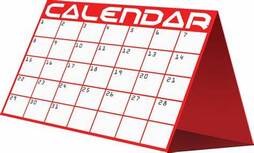 Fortunately help is at hand. There are websites that will allow you to set up and schedule posts in advance. When the clock ticks over to the appointed time, your post will magically appear on your chosen platform while you continue to snore your head off, or play golf or complete the monthly report on the snail population of the Galapagos Islands, or whatever it is you are usually doing at that time. Unfortunately, most of these websites charge for their services. This one, Hootsuite, does offer you a 30 day free trial so you can see if it is right for you and they also offer a free package with limited functionality. But the big advantage of sites like this is that you can sit down for a couple of hours once a week to schedule all your posts to that one platform in one go, then get on with the rest of your week without having to worry about them. If you have Facebook business page, which is different from a personal page, you can schedule posts for free. Look under the "publishing tools" menu for more information. You can also schedule Tweets. It's one of the little row of icons underneath where you insert your message (the one on the right with the calendar symbol and the little clock). Hootsuite and the other sceduling apps are quite picky about you sending out identical messages time after time, but that’s because of the rules governing spam. We like to post in the afternoon and again in the evening, so when we duplicate a post, we schedule it for the evening of the next day, rather than for the same day. That seems to get past the problem, but you may have to edit the message if it is specific to a single day - or limit it to one posting. 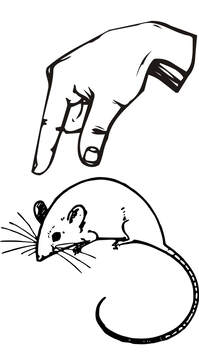 This blog is posted at midnight every Friday night, but do you imagine we spend our Friday nights with our fingers hovering over the mouse, waiting to click on it? We do not. Our website has the facility to schedule our blog posts. When this went live, I was probably deep in the arms of Morpheus or, at least, draining the dregs from a bottle of wine. So, our big messages this week are:
We have talked a lot about “engagement” with your audience, but we haven’t talked much about what actual messages to send them, so that’s where we will start next week. We hope you have enjoyed this blog and found it informative. Please feel free to take a look around the rest of the site to see what we have to offer. And if you want to make sure you don't miss a future edition of the blog, click the button to sign up to our newsletter. Week 8 -To Blog Or Not To Blog, That Is The Question.  As discussed last week, writing a blog is one of the ways that you can engage with potential readers in your target audience. But we’re not just talking about written blogs like this one. The term also covers things like videos on YouTube and Instagram. If you are trying to engage with a young audience, you are going to have far more success with those than you are with the written word. There are also podcasts, which are audio blogs and have a considerable following of their own, especially among people who spend a lot of time travelling. So, anything you read here about blogs, transpose to those other media as well. What is a blog? Time to look in the dictionary. I came across this definition, which is good enough for my purposes: “a regularly updated website or web page, typically one run by an individual or small group, that is written in an informal or conversational style.”
(long before the www was a twinkle in Tim Berners-Lee’s eye) its purpose was to “Inform, educate and entertain”. We couldn’t put it better ourselves. That is what your blog should aim to do. You can do just one of those three things or any combination of them. We hope this blog covers “educate” and “inform”, but if you are entertained as well, that’s a bonus. The important thing is that after reading our blog, you don’t feel you have wasted your time.  If people like your blog, they will come back again for the next one. They may even look forward to the next edition eagerly. And if they are doing that, they are almost certainly going to be interested in anything else you have written. They may even sign up to your email list so that they can keep up to date with your blogs – but be careful not to start spamming people. That’s a quick way to lose friends and followers.  Use the right tone. Use the right tone. The “tone” of your blog is very important, it says a lot about you and affects the way readers will perceive you. If your tone is too stiff and formal, then you will come across as “stuffy” and it may be assumed that your books will be stuffy too. On the other hand, if you are too chatty and informal, people may not take you seriously enough and, therefore, they may not take your books seriously. We’d be interested in hearing from you about what you think of our “tone”. Is it right for what we are trying to do? Is it too stiff and formal or is too laid back and relaxed? Or, is it something else? Feel free to use the comments section to let us know what you think. We have talked already about what interests, other than reading, your target audience might have and that is one thing you can use in your blogs. If your target audience is likely to be interested in dogs, then you can blog about dogs. If they are likely to be interested knitting, you can blog about knitting. If you have done your homework on your target audience, you will probably have come up with a list of things they may be interested in and you can blog about most of them, because you are interested in them too. We have created a list of blog prompts and you can download it at the bottom of this blog. 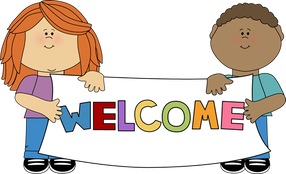 Where can you post your blog? There are a number of websites that will allow you to host a blog for free. Some of them might try to flog you a range of other services, such as a full-blown website, but they will let you post your blogs as well, so that’s the important thing. We Googled “free blog hosting” and came up with this list, which also happens to be a blog (though not by us). Is there anything that you shouldn’t blog about? 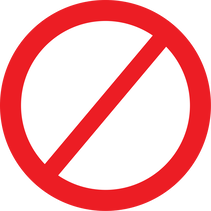 You are trying to make friends and there are two things that will lose you friends quite quickly: politics and religion. To that I might add climate change, veganism, gender issues, conspiracy theories and a few more. I once read the following Tweet “If I’d known that Val McDermid (a popular Scottish crime writer) was a socialist, I’d never have bought any of her books”. OK, that’s a particularly extreme viewpoint, but not untypical of the sort of narrow mindedness that exists. Venture into those fields if you feel you must, but make sure they aren’t minefields. It doesn’t matter how open-minded, reasonable or rational you think you are being; you are going to upset someone. This isn't a hard and fast rule. There are times when blogging on those sorts of issues is justified.
politics. This is particularly true if your book is aimed at people with a specific political perspective. If your books are religious themed, then you might be justified in blogging about religion. Just be careful, that’s all we are saying. You went to a lot of trouble to identify your target audience and build up a following on social media, so don’t throw it away by alienating them with one ill-advised rant about Brexit, the Pope or Greta Thunberg. You are entitled to your opinions, but not everyone will share them – even in your target audience.  It is time consuming to write blogs and that is enough to put some people off taking that route. So, it’s a good job it isn’t the only way to engage with your potential audience. There are also chat groups and discussion forums. One of the best known of these is Mumsnet so I’m going to use them as my model, even though I’m not a Mum (I am a Dad though). These groups offer the opportunity to discuss a wide range of topics that are of common interest. It is probable that if you try to plug your book there you will get kicked off, but a popular topic for discussion is “what to do during maternity leave” (as if raising a child wasn’t enough) and that is where you can drop into the conversation that a good way of using time is to write a book. You can also discuss books by other authors quite legitimately, under the appropriate thread(s). That at least allows you to let it be known that you are interested in books. "you try to plug your book there and you will get kicked off" The aim of using these chatrooms is to attract new followers to your other social media channels, where you can and do plug your books. And that is what happens when you engage with people. You turn them into friends and friends stay in touch. I’m a keen golfer myself. In researching this blog (yes, we do that), I discovered that there are some golf forums that run like Mumsnet. We also happen to publish a book about golf. Guess who’s going to join a couple of those fora as soon as they have enough time between writing blogs, promoting books and editing. 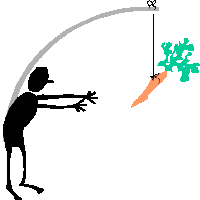 Now onto another popular way of engaging with your readers. The “freebie” or “teaser”. It is another strand of “engagement”, but one that is a bit more direct in its approach. The idea of the teaser is for potential readers to look at your work before they buy it. This ability already exists on some retail platforms with “look inside” or similar features. But they rely on you having a manuscript (MS) uploaded to the platform and on sale. What if you are still a few weeks away from getting the final version ready for launch? You want to start engaging your audience’s interest, but the MS isn’t yet ready for publication. It also relies on people stumbling across your book on the retail platform and that is unlikely to happen. In a previous blog we pointed out that there are 4,000 new books published very day, so you are walking a busy street. There is a facility on many retail platforms for customers to pre-order. This is great for getting a boost up the sales rankings on Amazon and other sites. If your books have been pre-ordered, then all the pre-orders get counted on the day the book goes “live”. That can catapult you up the sales rankings, which means that your book might feature in the “best-sellers” list for the day which, in turn, can lead to more sales. This is known as “momentum”.
you set up the pre-order. You can set the pre-order up a year in advance. That’s great for well-established authors who already have a loyal following eagerly awaiting the next book but, for you, a month or two in advance is all you need. But why should anyone pre-order a book when they don’t know if they will like it? Because if there’ no MS uploaded, there’s no “look inside” to read.  Because you have posted a teaser elsewhere and that has whetted their appetite. We encourage our authors to do this – and it works. One of our author's books got above 300 in the Amazon sales rankings for their book on the day it was released, thanks to pre-orders. OK, it isn’t quite Harry Potter – but it encouraged more sales on launch day. What is best practice for teasers? Well, whatever you offer has to engage the reader, so it really has to give them a flavour of what the book is about. If the first chapter or the first 10% of the wordcount does that, then that’s the bit to use, but you may want something a bit more dramatic, a bit more emotional or a bit more exciting, in which case you may want to cherry-pick from elsewhere in the book. You might even assemble a collage of extracts from different parts of the book – but for goodness sake don’t give away the ending. But the most important part is the last line of the extract. It has to be a “call to action”. This will include a link to the specific page on the website where the book can be bought or pre-ordered. The call to action will say something like “We hope you enjoyed this extract. You can find out more about “Book Title” by “Author Name” here. “Here” being the link to where the book can be bought or pre-ordered.  Note that the call to action didn’t use the words “buy”, “order” or “pre-order”. This is because people may feel pressured by those words. You are just being helpful by pointing them to the place where they can find out more. If they click the “purchase” button, it must be because they have made up their own mind to do that. Of course, giving people a teaser relies on having somewhere they can download it, which usually means a website, but some social media does allow you to post things that can be downloaded. Here at Selfishgenie we have a specific Free Stuff page where our authors can post their teasers and we promote them through our social media and they promote them through theirs. There is also a website called Wattpad where you can post extracts (or even complete books) and link them to other social media or websites. Or you can post your freebie as a blog on one of the websites that allows free blog hosting. In last week’s edition of this blog, we used an almost throwaway line when we said that YA readers are mainly online between 7 and 10 pm and that’s when you may be drinking your cocoa and watching Corrie and Midsomer Murders. But it isn’t such a throwaway. Reaching your audience at the right time of day is critical and we’ll be taking a closer look at that in next week’s edition. See – we even use teasers when we’re blogging. If you have enjoyed this blog and found it informative, make sure you don't miss the next edition by signing up for our newsletter. Ah, g'wan, ya know ya want ta. Just click the button.
Week 7 - Knowing Your Organics From Your Inorganics  Strategy – it’s a big scary word used by clever people who earn lots of money. No it isn’t. Strategy isn’t that complicated, at least not as a concept. Really, all it means is knowing what result you want and working out a way to achieve that result using the resources you have available to you and then knowing when you have achieved your result. We already know what result you want – you want to sell your book. "social media, which is a resource you can use for free" This weekly blog is discussing the ways that you can achieve that result using social media, which is a resource you can use for free (or, at least, quite cheaply). And you will know if you achieve your results if your book sales increase. Actually, there are some other things you can measure along the way to tell if you if you are heading in the right direction, but we’ll cover them later.  You can write your whole social media marketing strategy in five bullet points or less. Here’s ours:
As you can see, it isn’t exactly rocket science. There are other layers of actions below those five, but as someone once asked – how do you eat an elephant? The answer is: one bit at a time (apologies to vegans and wildlife conservationists – but it’s only a metaphor).
target audience for your book(s), but that only takes your strategy to the first bullet point. Because each audience is unique, we have to engage with them in unique ways. This is why blasting out generic Tweets doesn’t work. You need to understand the “organic reach” of your social media marketing channels to get the best out of them.  Let’s take Young Adult (YA) fiction as an example. YA fiction is aimed at readers in the 12 to 18 age group. They are social media savvy and they are usually on the latest and trendiest social media platforms. If your idea of social media is Facebook, then you are onto a loser with the YA audience. Only 51% of teenagers who use social media use Facebook, the second smallest group after the over 65s. Even Twitter is a bit old hat for them, taken over by oldies who only want to argue about politics.
allowed to use their phones or other devices during school hours, except for schoolwork. The best time to engage with YA readers is going to be during the evening, typically between 7 and 10 pm. But that’s when you are sitting down with a mug of cocoa, watching Corrie and Midsomer Murders. When we talk about the organics of social media, we are really talking about the way your messages “grow” and get noticed. It’s like applying fertiliser to a plant. Put it down at the right time and in the right place the plant will flourish. But put it down at the wrong time and the rain will wash it away and the plant will wither and die and if you put it in the wrong place it won’t get to the roots of the plant, with the same result.  YA is a good example of this, because young people love sharing things on social media – far more so than their elders. So, hit the YA audience with the right message at the right time and it won’t just reach the ones who follow you, it will be shared with all their friends as well. And then their friends will share it and so on and so forth. If you do it right, you may even “go viral” and your message will be seen by millions of YA readers around the world. But on the other hand, the YA audience is the most challenging to reach because they respond best to visual images – particularly video. That’s why Tik-Tok is currently the fastest growing social media platform on the planet. But how do you get a message out about your books on Tik-Tok? We’re not going to answer that question - yet.  The first plant you have to nurture and grow is your own social media presence. If you are an author using Twitter and you have only 100 followers – you haven’t got a social media presence. In organic terms, you aren't even a seedling. Until your followers number in the thousands, probably tens of thousands, your social media presence isn’t going to help you at all. This is when people get tempted to buy “followers”. Well, it’s your money and if you want to waste it, that’s your privilege. Because most paid for followers aren’t real people, they are bot (robot) accounts. They only exist as a username. And bots don’t buy books. "If you are an author using Twitter and you have only 100 followers – you haven’t got a social media presence." The cleverest of these bots re-Tweet other people’s Tweets, just so they can appear more human. Strangely, people actually follow some of these bot accounts, including other bots, so you have bots following bots. Crazy, isn’t it? You know those biogs that say “Follow me and I’ll follow you back”? How do you know you aren’t following a bot? A lot of bot accounts are used to bombard people with advertising. OK, I know that sounds hypocritical when we’re blogging about social media marketing, but at least we’re real people (honestly – we are!). 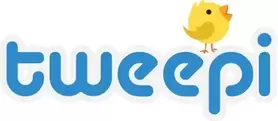 There is an app called Tweepi which will help you to gain followers over time. It’s a bit of a blunt instrument, based on the idea that if you follow a lot of people, some of them will follow you back. You have to pay to use some of their features, but you can also get a free account with a limited range of features, which is enough to get you started. But if you are prepared to spend twenty minutes a day on Tweepi you can probably add about a hundred new followers a week to your Twitter account. We’ve produced a guide to using Tweepi which you can download at the bottom of this blog. It's bit dated now, so bear with it. One of the things you can do with Tweepi is to use keywords to identify your target audience. You can also suggest accounts to find followers, so if the biggest name in your genre has a Twitter account, you can put their user name in as a suggestion when you set up your account. The real secret, however, is to attract more followers because of the stuff you post on social media. This is your “engagement strategy”. Let’s say that when you identified your audience characteristics (the homework we set last week), you thought that many of your audience would probably be dog lovers. So, if you Tweet lots of things about dogs, anyone who likes dogs is going to be interested in reading your Tweets.  Not only will they read your Tweets, but they may re-Tweet (RT) the best ones. That will bring you more followers. But, more importantly, if your Tweets get lots of “likes”, they are more likely to appear at the top of peoples’ Twitter feeds, which makes them more likely to be seen. That’s how social media algorithms (horrible technical term) work these days. If your Tweets are the first ones that are seen, they are more likely to be read and they are more likely to be RT’d and because of the number of likes, they are more likely to bring you new followers. That’s organic growth in a nutshell (groan at bad pun). If you are good at it, you will soon have more followers than people you follow yourself – just like Katie Perry or Steven Fry.  The whole point about “social media” is that it is social and that means engaging with other people first, taking an interest in what they have to say. Mind you, reading some of the posts it is sometimes easy to re-name it anti-social media, but that is a whole different blog. So, the other thing you can do is engage in conversations about other people’s posts. If you are engaged, then other people in the conversation may find what you have to say interesting enough to want to follow you and, of course, you want to follow them. It’s another way of getting organic growth.
but Tweet about dogs (or whatever) far more frequently. A ratio of 10:1 is probably about right. What sort of message to post about your books is the subject for a later blog, so stick with us. These last few paragraphs have mainly been about Twitter and that is because it is the easiest platform to demonstrate the points we wished to make. But the same basic rules apply to all the other social media platforms: Facebook, Instagram, Pinterest et al: social first, commercial second. It’s a hard lesson to learn if you want quick results, but if you want to be in this for the long haul, it is worth taking the time. And, more importantly, if you want to see your sales growing, you have to be in it for the long haul. If you have only written the first chapter of your book, or even the first paragraph, then now is the time for you to start engaging with your audience. That way you will already have an engaged audience by the time your book is published. But it’s never too late, so even if your book has been out for years, you can start today. You will probably have worked out by now that this is all very time consuming. Which is why some Indie authors choose to use (small) publishers, like us, to do this for them. But not all small publishers are equal, as I explained in a previous blog. Paying for services up-front rarely produces the results hoped for. There will be no attempt to establish any sort of social engagement, which means the posts about your books are less likely to achieve any results.. OK Selfishgenie Publishing, put your money your money where your mouth is - what are you doing to engage with your audience?  You’re reading this blog, aren’t you? That is part of our engagement strategy. We identified the fact that if you are an Indie author, you are going to be interested in knowing how to market your books. If you are an author then, almost by definition, you are a reader too. So, we’re publishing this series of blogs so that you will engage with us and we can engage with you. You might take a look at our books while you’re here or you might not, but that doesn’t matter. It is the engagement that matters. In previous blogs we have used some of our books as examples of what we were talking about. It comes as no surprise (to us) that our sales for those books went up a little bit after those blogs were posted. I mentioned at the top of this blog that there are some measurements that will help you work out whether your strategy is working or not and social media provides some easy measurements for you to use: Number of followers, number of RTs and number of likes. If those numbers keep going up, then your engagement strategy is working. Some sites offer even more “analytics” and you might want to take a look at them to see what they might tell you. For us here at Selfishgenie we also measure “number of visits to our website”. When you clicked on the link to get here, you showed up on our metrics (more jargon, it means the way we measure success). So, do you read a lot of blogs? Many are part of someone’s engagement strategy. Don’t worry about that though. The important thing is whether or not you find the blog interesting or entertaining. 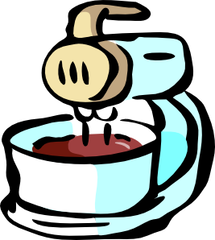 In terms of the “marketing mix”, engagement on social media falls under two different Ps: Place and Promotion. Place is the “channels” that are used: FB, Twitter et al and Promotion is the messages that you put out to help you engage with people. Next week we’re going to take a more in depth look at blogs and also look at using extracts and teasers to promote your work. If you have enjoyed this blog and found it informative, do be sure to register for our newsletter so you can be sure of never missing an edition. Just click the button
Week 6 - The Big Shout Out  I’m starting this week’s blog with some basic maths for you. Let’s say you write at a rate of 1,000 words every two hours and you produce a book that is around 90,000 words long. That means that it took you about 180 hours to write. Those 180 hours may be spread over a few weeks, a few months or even a few years, but it doesn’t matter. If you were to pay yourself the UK national minimum wage (at time of writing) for your work, you would get £8.72 per hour if you are over 25. So, multiply the number of working hours by the hourly rate and it means that you need to receive £1,596 in “royalties”, just to pay you for the time taken to write your book, which doesn’t include time spent editing, re-writing, proofreading, formatting, up-loading and marketing. But we’ll keep it simple and call it £1,600. If you sell your book as an ebook on Amazon for £4.99, which is a typical price for an Indie author, you will receive about £3 in royalties, which means you need to sell 533 books just to cover your wages for writing the book.
royalties, because the publisher takes the other 50% to cover the work they do (they don’t work for minimum wage). That means you need to sell 1,066 books to earn £1,600. That doesn’t sound too bad, does it? There are many self-published authors who sell a lot more books than that. Actually, that is quite a lot of books for an unknown author to sell. So, the unknown author has to find a way to become a “known” author and that is where marketing comes in. There are 4,000 new books published every day, that’s over 115,000 a month. Most of those books will be by unknown authors and most of those authors will remain unknown – unless they learn how to market their product.  Trust me, 1,066 people aren’t going to stumble across your book by accident. But if I’ve got a publisher, why do I need to do the marketing? A good question. All authors, even those signed to big publishing houses, have to do some marketing – remember it’s the authors that do the book tours and radio interviews, not the publishers, and those are marketing activities just as much as the sort of things I’m going to talk about. But the short answer is that your publisher has several authors on which to concentrate, but you can concentrate on you. Double the marketing activity means double the likelihood of selling some books. You have to work as a team on this to get the best results. But this blog is actually aimed at all Indie authors, so this is aimed at the self-publishing community just as much as the published community.
number of things. If you are good at it, it may cost you almost nothing. If you aren’t any good at it, it could cost you sales. This is where “social media marketing” comes in, because that is the cheapest form of marketing there is, short of standing on street corners and shouting about your book. However, just putting something on Facebook or Tweeting your book's title isn’t going to work. Why not? Let me use an analogy. 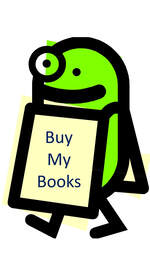 Let’s say you live in a house and on the wall outside your house you hang a loudspeaker. Inside you have a microphone connected to the speaker (for the nerds, yes it is connected through an amplifier). Then you close the curtains so you can’t see the street. Now you stand in your house, speaking into the microphone saying “buy my book” over and over again. Will this sell your book? First of all, lots of people who might buy your book won't even come along that street, they'll be using another street entirely, so they will never hear your message. Then you don’t know if there are any people outside your house to hear your announcement. At some times of the day the street might be quite busy, but at others it will be empty. Even if people are there, you don’t know if they read books and, finally, even if they read books, you don’t know what sort of books they read. If they don’t read books like yours then you are wasting your time. "your announcements are getting lost amongst theirs" But it’s worse than that. Because there are 99 other houses in your street and in each one of them there lives another author and all 100 of you are doing exactly the same thing, so your announcements are getting lost amongst theirs and theirs are getting lost amongst yours. And that is why social media marketing fails for so many authors. Which means that just posting on Facebook, Instagram or Twitter is probably not going to sell you many books.  Which brings me to paid posting services. There are dozens, even hundreds, of online suppliers offering to Tweet your book to their millions of followers – at a price. The problem is that they are doing exactly what I have described in my analogy. Not only that, they are trying to add even more authors to their list, which makes the noise worse, not better. Which means you are paying them to do something that you already know doesn’t work. It doesn’t matter how many followers they have, or how many likes their FB and Insta accounts get, if they aren’t reaching the right people, they aren’t selling your book for you. "you are paying them to do something that you already know doesn’t work" Our recommendation is not to pay for services like that. But if social media marketing doesn’t work, why do so many businesses spend so much money on it? Because it does work, but not if you just stand in your house shouting “buy my book”. There is a science behind social media marketing and if you learn how to use that science, your book will sell.  If you have been following this series of blogs you will know that we are great advocates of “learning” and this is something else you can learn about. This course with Future Learn is free and serves as a good starting point for learning how to use social media marketing. It is only two weeks of study (you could complete it in a day if you felt like it) and you can sign up from anywhere in the world. And it isn’t just for authors – any small business can use social media marketing. In last week’s blog I listed the 6Ps of marketing and I said I’d return to them. So, I’m going to start with that first P – product and how it relates to social …. Tell you what, let’s call it SMM for short. What is your product? 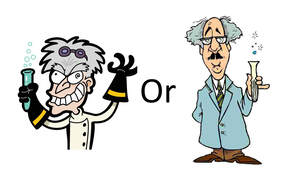 Yeeeees, it’s a book, we know that. But is it just a book? For example, is it fiction or non-fiction? There’s no point in trying to sell a fiction book to someone who only reads non-fiction. Next, what genre is it? Some people read only one genre, some read a few different genres and some people read anything and everything. The problem is, you have to assume that they only read one genre and that it is yours.
they may be people just like you. But if you write in several different genres, you may have several different types of reader and you need to address each one in a different way. You won’t attract a reader of Young Adult (YA) fiction in the same way as you attract a reader of military history – they are two very different people. This is called audience targeting. If you know what your audience looks like and behaves like, then you can target them better. You can be online, on Twitter for example, at the same time of day as them. You can shape your marketing messages in a way that appeals to them. Most importantly, you can engage with them.  Because social media marketing isn’t about advertising, it is about engagement. No, not that sort of engagement. If you can establish a relationship with your target audience – even if it is only via a social media platform - they are more likely to take an interest in you and more likely to take an interest in your work. I’ll give you a frinstance (as my Mum called it). If your ideal reader is likely to have an interest in brewing craft beer and you have an interest in brewing craft beer, you can engage with them by talking about craft beer brewing. The fact that you are also an author becomes incidental. One day they may decide to look at your profile on whatever social media platform you are using and then they will discover that you're an author (it does say you're an author, doesn't it?), at which point they may take a look at your book(s). But you haven’t forced it on them.
to themselves “Oh, I didn’t realise he/she was an author as well as being a craft beer brewing enthusiast. I wonder what his/her books are like?” and they might take the time to find out. Because you have done your research on your “ideal” audience, the chances are they will read the sort of books you write and that’s the battle half won. But most importantly, engagement builds up your audience numbers, because you will be joined by more people who want to talk about craft beer brewing (or whatever), which means more people see what you post on social media. This is what is known as "organic growth". The opposite to organic growth is "paid growth", which is where you pay to reach an audience, usually through advertising. Does this sound like manipulation? We’d prefer to think of it as understanding human behaviour. In any business, of any size, there are people earning salaries far bigger than mine who are “understanding human behaviour” and using it to sell you something. At least you do have a genuine interest in craft beer brewing (or whatever).  So, a bit of homework for you for next week. Draw a pen picture of your ideal reader. Here’s a few things for you to consider:
 Identifying your target audience is an important first step in your marketing strategy. Strategy: that’s a big scary word. Don’t let it scare you though because it is far easier to understand than you may think. It is the implementation of the strategy that is actually the hard part. But I’m getting ahead of myself because we'll be discussing strategy in more detail in our next blog. See you next week (I hope). If you have enjoyed this blog and found it informative, make sure you don't miss any future editions by signing up to our newsletter. Just click the button. Week 5 - Judging A Book By Its Cover  I’m going to be honest with you up front. To market your book properly you really need to do a business management course with a strong marketing focus, then work in a marketing department or consultancy for several years to gain experience. But you haven’t got time for that, so you read blogs about marketing instead. Fortunately, one of our team (me) has a Masters in Business Administration and knows a bit about marketing, so we can post this blog and not worry about being accused of not knowing what we’re talking about. But it is a complex subject and in a blog all we can really do is scratch the surface and provide you with a few pointers to get you heading in the right direction.  Our starting point is the “6Ps”, aka “The Marketing Mix”. These are the six areas on which a marketing strategy is based. Get them right and you have a fighting chance of selling your product – any product. Get them wrong and you are going to struggle to sell anything. Pretty much anything you have ever bought that isn’t an essential to your survival, you have bought as a consequence of responding to the marketing mix. Even the brand you have selected in preference to another brand is as a result of successful marketing. You are even reading this blog because of marketing.
word “advertising” so far. That is because advertising is just one small part of the marketing mix – though it is the bit that probably costs the most. But what are the 6 Ps? They are:
 But before that we’re going to talk about book covers. Why? Because they are actually part of your marketing mix. They are a “promotion” tool. But they are so important that they need a whole blog of their own. They say “Never judge a book by its cover” (African Journal of American Speech, 1944 - the original version actually said “spine”, which is even more pertinent). But people judge books by their covers all the time. And they will judge your book by its cover too. "And they will judge your book by its cover too." Imagine you are in your favourite bookshop, looking for your next read. You browse along the line of shelves and all you can see is their spines. On the spine you will see two things: the author’s name and the book’s title. The rest of the spine is just coloured paper and maybe a few stray lines from the book’s cover that the designer wrapped around to make it look nice.  You will be drawn to the book either by the author’s name – it is familiar to you - or by the book’s title - it is intriguing and you want to know more. So, you pull the book off the shelf and you read the blurb, which is either on the rear cover or on an inside page where it’s easy to find. By the end of reading that you are halfway to buying the book. You may, by now, have noticed the front cover, but you may not have. But on a website, you aren’t just presented with the things you are in a bookshop. On a website you can see the entire front cover of the book. If it grabs your attention it may draw you in before you even know the author’s name or you read the book’s title. So, the cover of the book is now a vital ingredient of your marketing strategy. Whatever we are here at Selfihsgenie, we’re not experts on book cover design, but we know that if you put the right cover on the right book, it will sell. It needs to tell you something either about the plot or about the main character(s). Most of all it needs to tell you something that will make you want to read the blurb.  Look at the cover for Stalker, which is one of the books we publish. The cover is dominated by a shadowy, menacing figure. Straight away you know that this is a book about menace and threat, it is trying to unnerve you and make the hairs on your neck stand on end. It is probably more unnerving for a woman, which is unsurprising as it was written by a woman, but some men may also feel threatened by it. If you like books that do that, you may want to know more, in which case you will probably read the blurb and, if the website offers the facility, you may “look inside” and start reading the story. You are well on your way to buying that book. In fact, statistically, you are more likely to buy it than to not buy it. BTW, you can click on the image to find out more. There are a few ways to go about getting the right cover for your book. We’ll start with the cheapest. 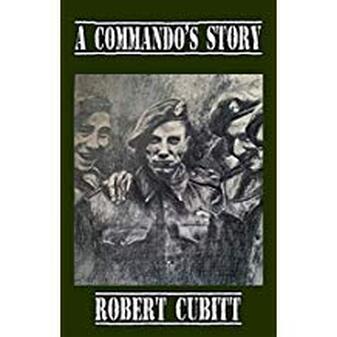 If you are an artist or designer, you can do it for yourself. One of our author’s was lucky; his sister* is an artist and because the book is a biography of their father, she was willing to design the cover for free. And it is a particularly good example of what we’re talking about. It’s the image shown alongside. I don’t know about you, but when I saw that face I wanted to know more about the man behind it. The eyes, in particular, have a quality that invites the question “What sort of man is he?” and to find out the answer, you have to read the book. Which is why we published the book. I’m not going to pretend it’s one of our best sellers, it’s in a very niche genre, but it has sold enough copies to justify its presence in our catalogue. Again, you can click on the image to find out more.  The next cheapest option is to find a designer online who will design your book cover. There are plenty plying for hire on Fiverr.com and some of them are very good. Prices vary, you can get a simple design for about $20, but anything that requires more work is going to cost more. It is necessary to be very clear about what you want from your designer. They will do what they’re asked to do and they won’t read your book first to find out what it is about. This means that you need some sort of idea of what you want your cover to look like before you brief them.
women in big bonnets and hunky men with their shirts open to the waist are fine for romances, but they aren’t going to sell you many sci-fi books or spy thrillers. So, make sure you understand what the norm is for your genre. It’s fine to be original and mould breaking, but only within the “rules” for your genre.  My recommended start point would be to go onto Amazon (or any other bookselling website) and browse through the books that are on offer, within your genre. Try to ignore the titles and author’s names. Just focus on the cover images. Which ones stand out for you and which ones don’t? The answer to that will inform what you ask your designer to do. If necessary, copy an image and send it to the designer and say “something like that!” Many designers work with Photoshop or similar software to merge and overlay images. That’s fine if they produce the result you want. But remember, you have to own the right to use the image(s).  If you didn’t take the photo(s) yourself, you don’t own the copyright and you can end up in trouble if you use the image without the copyright owner’s permission. And it doesn’t have to have the © symbol displayed for you to be liable. There are hundreds of thousands of images available on websites such as Depositphotos and Shutterstock (and similar sites) and their general licences allow you to use them for book covers (sometimes up to a maximum number of copies sold). Bite the bullet and buy from them. Yes, you can go onto a search site such as Bing Images and select the filter that says “Free to share and use commercially” – but that doesn’t mean they are. I have seen images that are the copyright of companies like Getty Images that are displayed under that filter and Getty Images are very litigious if you use one of their images without purchasing a license. Never assume – always check. As an aside, the same applies to ANY image you use in a book. If you didn’t take it or make it, you can’t use it without permission and you may (more than likely will) be sued for breach of copyright. Yes, we know that lots of people do it, but that doesn’t mean they won’t end up in court one day. Just remember the story of Wikipedia and the monkey that took a selfie. 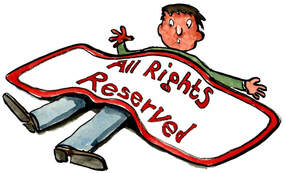 Many publishers offer a design service for book covers. Some ask for payment up front, but others don’t, and some state that if the author takes back the publishing rights for the book then they have to purchase the right to use the cover image. So do make sure you know who owns the copyright for the cover – it may not be you. You may have to have a new cover designed if you want to self-publish the book or sign with another publisher. FYI, we make it clear in our contract that if we design a cover, or pay for a cover to be designed, then we own the copyright for it and it has to be purchased if the author wants to use it elsewhere. To be honest, we’d rather the author came up with their own cover design, but we know that isn’t going to happen very often. Not every author has a sister who is a talented artist. For some more tips on book cover design, try this blog. So, you have an edited and proofed book, you have a cover and it is sitting on a retail platform just waiting to be discovered by eager readers. What happens next? Find out in next week’s blog. If you have enjoyed this blog and found it informative and don't want to miss the next edition, you can sign up to our newsletter by clicking the button below. Go on - you know you want to. * To find out more about the artist who deisgned the cover for "A Commando's Story", Di Cubitt, you can visit her website.
Week 4 - Size Doesn’t Matter – It’s The Result That Counts 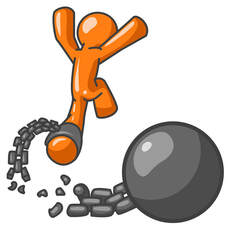 So, you’ve tried finding an agent and not been successful and you’ve submitted your book to medium sized publishers with similar results. Congratulations, you are now an “Indie author”. This is a club that is growing in size and probably has a global membership of over a million right now. You even have your own hashtag on Twitter: #indieauthor. With the arrival of the internet, whole new industries opened up that had never existed before. Amazon may be ubiquitous today, but it is sometimes easy to forget they didn’t even exist until 1994, just 25 years ago. "Congratulations, you are now an “Indie author”." One of the things the internet brought was platforms that allowed authors to self-publish their books. Lulu was one of the first, established in 2002. It was a game changer for authors who couldn’t find a publisher. It also produced an exponential growth in the number of people describing themselves as authors, to the millions there are around the world today. Unfortunately, self-publishing is still sneered at by many and shunned by more than a few readers. The way some readers see it, a self-published book, for some reason, can’t possibly be good. This is no more true than saying that a bookshelf built in someone’s garden shed is going to collapse. Yes, it might, but at least try placing your book on it before you make that judgement. You are not Sheldon Cooper – you can embrace change. 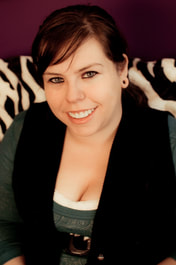 Self-published author and millionaire Amanda Hocking Self-published author and millionaire Amanda Hocking Have you heard of Amanda Hocking? No? Well maybe you should be more adventurous in your reading. In 2010 she was un unknown and penniless author from Austen, Minnesota, USA, frustrated at not being able to find a publisher. She wanted to raise $300 so she could go to Chicago to see a Muppets exhibition (she is a big fan). So, she self-published her book. After a few weeks she had sold 150,000 copies, making $20,000. Several books later and she is now a millionaire. Not a single publishing house nor a single agent was involved. She did it her way. There are many well-known authors signed to big name publishing houses who don’t make that sort of money. OK, not every author can be an Amanda Hocking - but they can all dream. There are plenty of authors who make a respectable living by self-publishing. There are also thousands who will never make a penny out of it, but there are reasons for that and we’ll take a look at some of those later in this series of blogs.  One thing some authors discovered was that if they could publish their own books, they could also publish books for other authors. This has led to the growth in small publishing houses and not all of them offer good value for money. I’ll get onto that in a moment as well. But, for the moment, I’ll tell you that I’m going to talk about self-publishing and using small publishers as though they are the same thing because, for most purposes, they are. So, if they are the same, why should you use a small publisher? Here we get to the crux of the matter. A publisher (please excuse me for dropping the “small” prefix) will do things for you that you don’t know how to do, you don’t want to do, you don’t have the time to do or they can do it better than you. The last time we redecorated our house we could have done it ourselves and saved a lot of money. Why didn’t we? Because our local painter and decorator could do a better job, made a lot less mess and we could carry on doing the things we really wanted to do, which wasn’t painting and decorating. Small publishers are the painters and decorators of the self-publishing world.
2. Providing an editing service, 3. Proofreading your work, 4. Formatting your work into an actual publishable book, 5. Uploading your book to the relevant retail platform(s) and 6. Marketing your book. I’ll be talking more about each of these in a moment.  If the publisher has done those things, they have earned their share of your book’s royalties. If they didn’t, why are you using them? All of those things the author can do for themselves. They aren’t all easy and some of them are very time consuming and/or tedious. Which is why some authors may prefer to get someone else to do them. There are many “publishers” out there that will ask you for money up front to do those things for you. Don’t pay them. Why not? Because once they have your money, they have no need to do anything else; in particular, bullet number 6. Marketing the book is the hardest and most time-consuming part of the process, but it is the point at which the author earns their income. "Because once they have your money, they have no need to do anything else" If you pay a “publisher” £500 to do the first 5 things on that list, then there is no need for them to do the 6th and hardest. They have fulfilled their remit by getting your book onto Amazon, Lulu or Kobo. They have no need to spend hours, days and weeks of additional effort to market your book. But if the publisher has done those first five things without you paying them, they will want some sort of return and they will only get that when your book sells. Proper publishers are hungry and they need to eat, so they will work hard to market your book so they can earn money. Pay up front if you want – but don’t expect your book to become a best-seller.  If you want to self-publish, then your starting point isn’t to upload your book onto KDP (or Lulu or Smashwords or Kobo etc). Your starting point is to learn how to do the 6 things in that list of bullet points above. In Week 1 of this blog we talked about beta readers and they are your source of informed opinion on your book (informed because they are your audience). If you haven’t yet established your network of beta readers, then now is the time. Why is this a vital step? 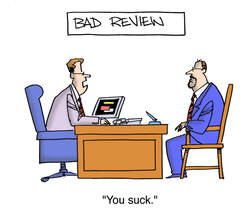 Well, people may buy your first book, but if it is the proverbial dog excrement, they will not come back for a second serving. Then there are the reviews. Not just on Amazon, but on Goodreads, Reddit and a whole host of other websites. Trying to market a book that is getting a lot of bad reviews is like trying to market a bicycle with square wheels. All authors get a few negative reviews, but if all you get are negative reviews you won’t sell any more books. And don’t try to fool people by getting friends and family to post good reviews for you. Amazon is wise to that and so are their customers. The reviews that carry the most weight are the ones posted by people who write a lot of reviews and that probably isn’t your Mum or your mate down the pub (assuming pubs ever re-open) But your beta readers have told you your book is great, so you don’t have to worry about that too much. "The reviews that carry the most weight are the ones posted by people who write a lot of reviews"  Editing is about taking a good book and making it better. It may be that a paragraph needs to be shorter, sharper, punchier. It may be that the descriptions are a bit flat and need jazzing up. The pace of the narrative may be too slow, or too frantic, or the plot is too confusing. It may be that a character is too shallow or unbelievable. An editor looks at all those things and more and offers advice on how to make them better. But they won’t re-write the book for you. There are plenty of people offering paid editing services online. It is up to you whether or not you engage with them. But if you do, make sure you understand exactly what to expect from them. You can expect to pay at least £20 an hour for editing, perhaps £200 for one read of your book – and that’s the cheap end of the scale. Second readings are usually cheaper, perhaps half the cost of the first. There are on-line courses you can do to learn how to edit your work and some of them can be accessed for free, or quite cheaply. Learn how to edit and you can enhance your book no end. You still need good characters and a good plot, but you already know how to create those, don’t you? If you don’t, then again, some investment in learning will pay dividends in the long term. But you already knew that. You may think you are a good writer already and maybe you are, but everyone can improve with a little bit of help. If you don’t think you have anything to learn, why are you reading this blog? I would recommend this course from Future Learn in conjunction with The Open University – and its free. You can also sign up no matter where you are in the world.
It is something that is much easier to do than editing, but it never hurts to get a fresh pair of eyes to take a look at your work. I have spotted typos and mistakes in books published by the biggest names in the busines – so no one is immune from missing things, no matter how many times they read them. You can find proof-readers who are quite cheap, offering their services on Fiverr.com. 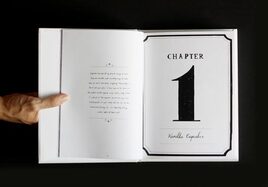 Formatting and uploading books is a matter of trial and error, but it is something that needs to be considered. I have bought books that have really not presented themselves very well because of poor formatting. A reader may only have paid 99p for your book, but they still want it to look like it cost £12.99. There is a whole blog that could be written about formatting and maybe we’ll write it one day, but the start point is to look at the books in your house and on your Kindle or other e-reader. What makes their layout pleasing – or what annoys you about them? If you do nothing else, take a look at what other publishers have done and copy it. 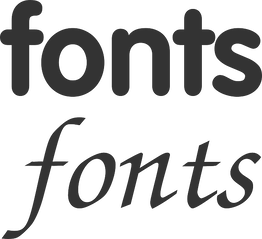 Fonts are especially important. There are fonts that are easy to read on the printed page; there are fonts that are easy to read on an e-reader; there are fonts that work on both and fonts that work on neither. Don’t spoil your book by using a font that looks pretty or quirky or different but doesn’t work on the media you have chosen for publishing. And do remember that a layout that works fine on an e-reader will probably need revising for a paperback. KDP can cause hours of frustration because of that. Uploading a book onto your chosen platform can take hours the first time you do it. But when you’ve finally beaten it into submission, the next time is a lot easier. There are help guides and often videos on most self-publishing platforms, but who wants to waste time reading/watching those? Actually, you do. Don’t work blind, use whatever help is available. One of our authors, Robert Cubitt, wrote a guide on how to use KDP, for some authors of his acquaitance and he has given us permission to let you use it. You can download it below. However, we accept no liability for it.  You will notice that I haven’t mentioned book covers and their design. That is a subject for a separate blog as it comes under the heading of “marketing”. Which brings us to that very subject. Have you got a few weeks to spare? No, didn’t think so. We’ll do our best to break this complex subject down into bite sized, easily digestible chunks. It is probably the most important part of this series of blogs, because this is where you will actually get the financial return for all those weeks, months or even years you have expended writing your book and getting it to the stage where you actually need to market it. "It is probably the most important part of this series of blogs" Over the next few weeks this blog is going to cover social media marketing mainly, which is the cheapest form of marketing you can do. We will also tell you why paying money to people to Tweet your books is money wasted. But that is part of the story, so we won’t spoil it for you. We’ll also take a look at the 6Ps of marketing and how they relate to social media. Feel free to Google that before we meet again. If you have enjoyed this blog and found it informative and you want to make sure you don't miss an edition, just sign up to our mailing list by clicking the button.
Week 3 - Size Isn’t Everything  Last week we looked at trying to find yourself an agent. Of course, we hope you succeed in your search, but you may not. There may come a time when you have exhausted your list of agents compiled from “The Artists’ ℇ Writers’ Yearbook”, but that doesn’t mean you are at the end of the line. Oh no – you have hardly even left the station.
I said in last week’s blog that each submission was a one-shot deal – but that applies only to that book. Many authors find an agent with their second, third or even fourth effort. So – keep the faith, keep writing and keep querying. Secondly, you aren’t at the end of the line in terms of traditional publishing quite yet.There are medium sized publishing houses, outside of that elite clique of international names, who will accept submissions direct from authors. Search the internet to identify them and then do exactly what you did with querying an agent, because it is an almost identical process.  First of all, you will have to establish if they are a bona fide medium sized publisher. That is simple enough. Their website will list their authors. You may not recognise some of their names, but that is probably because we are more familiar with the best-sellers list (the top 1% of authors) than we are with the mass of authors who make up the majority of the publishing market. You should also be able to find their books on the websites of the book retailers, both the ones that are on the High Street and the ones that operate online. If the publisher has only a handful of authors or titles, they aren’t medium sized, they are small (but perfectly formed, like us).  Many of the medium sized publishers concentrate on particular market sectors: romance, sci-fi, war and military etc. So, the next thing you need to establish is which publishers are going to be right for you. You are wasting everyone’s time if you submit to a publisher that doesn’t publish your genre and you are just leaving yourself open to the disappointment of receiving yet another rejection letter. There is no substitute for research. Like agents, publishers are inundated with submissions. For this reason, they often close for submissions for a few months at a time. Don’t upset the publisher by sending in your query when they say they are closed. They won’t read it. "Like agents, publishers are inundated with submissions." But also don’t be put off by the “closed” sign. Keep going back to the website to see if they have re-opened. If they have put out a date when they expect to re-open, make sure you visit that day and every day until the “open” sign goes up again. Persistence pays off. But, just like agents, medium sized publishers only take on a handful of new authors each year, so you are still fishing in a very small pond alongside tens of thousands of other anglers, so you may still be unsuccessful. 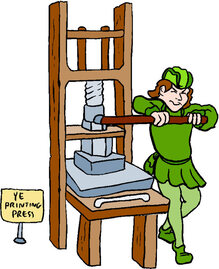 Now, back in Week 1 of this blog we made it clear that you should never part with money up front for publishing your book. We stand by that, but we also said there are times when you may need to pay for certain services. We are now going to look at one of those services. It actually falls under the heading of “self-publishing”, but it is of a particular type. For a fee, there are companies that will take your book and will print you a set number of copies for an agreed price. For some people this is a service worth paying for. It is essential, at this point, for us to be very clear about what these businesses offer. They will print your book for you, but they won’t sell it. Selling it is very much up to the author.
your book has, the trim size (the physical dimensions), the number of illustrations, the quality you want and other factors. The printers who offer this service usually have a menu of pricing options and provide a pretty good quality product – they wouldn’t stay in business if they didn’t. The problem usually comes from the minimum order quantity. Typically, this is around 500 copies, as it isn’t worth the printer setting up the presses for anything less.  I don’t know if you have ever taken delivery of 500 books in one go, but they are heavy (you’ll pay for that in the delivery charges) and they take up a lot of space. At 20 books to a box (about as much as one person can lift without risking injury), you are going to end up with 25 boxes minimum. Then you have to try to find outlets to sell the books, which means trekking around all the independent bookshops in the area (and probably further afield), trying to persuade them to stock a few copies on a “sale or return” basis. There are some specialist outlets you can also try, such as garden centres for gardening books, craft shops for crafting books etc but it still needs you to wander from each to the next with an armful of books and a hopeful smile.  Let’s have a look at the economics of this. If you have had 500 books printed at a cost £5,000, that means each book has to sell for a minimum of £10 just to break even. Then add about 50p to cover the delivery costs. The bookshop (or other outlet) wants to make a profit, so we’ll call that another £1 (they will probably want more, but we’re optimists) and you also want to see some income, say another £2. So, your book has to sell for a minimum of £13.50 per copy. But you are an unknown author. Are people going to be willing to pay that much? We will be discussing pricing in greater detail in a later blog. At the other end of the cost range, the book will have to sell at £6.50 plus for everyone to make something from it, but even that is a lot to pay for a book by an unknown author. But at that price you do stand a better chance of success and you have a bit more room to negotiate with stockists over their cut. The most likely outcome is that you are going to end up with a shed, garage, attic or even all three, full of unsold books. You’ll attend book fares and author events, of course, you’ll give away a few copies to friends and family for free and maybe donate a few copies to local libraries, but that still leaves a lot of books unsold. I know the most likely destination for them. "you do stand a better chance of success and you have a bit more room to negotiate with stockists over their cut."  There is a solution that allows you to sell to a wider audience and that is Amazon Marketplace. If you set yourself up with an account on that you can sell your book through their website, which thousands of people do for a wide range of products, not just books. Amazon will want a cut, of course and you’ll have to charge post and packaging, which adds to the cost of your book for the reader. But it does put your book in front of a much wider audience and you don’t have to trek around the bookshops and the garden centres to do it. 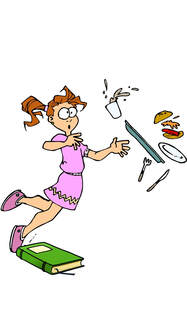 But no one is going to stumble on your book by accident, even on Amazon. You are going to have to do some marketing and we’ll be covering that in future blogs, because it’s such a huge subject in its own right. If you have a storage problem, there are three ways of dealing with it. The printer may agree to store your books for you, but they will charge you for the service. When you get an order, the printer will package and post your book for you. Not all printers offer this service. Amazon will agree to store the books for you in their warehouse and they will also distribute them for you. But, of course, Amazon will charge you for that as well. And if your book doesn’t sell, after a while Amazon will ask you to take your unsold copies back (or dispose of them in another way), to free-up space for more profitable products. Finally, there are “fulfilment” services. These are companies that hold stocks of products for a wide range of small online retailers (again, not just authors) and distribute the products on their behalf. But beware – not all of them have glitzy warehouses. Some operate out of their garden sheds or garages – just like you.  A modern POD facility. A modern POD facility. The 21st century innovation of “Print on demand” (POD) has changed the dynamics of this industry for the better. Your book is held as a computer file by the printer and when an order for it comes through, the book is printed, packaged and distributed. It normally reaches the customer within 3 – 5 working days. For readers that want paperback books rather than e-books this is usually acceptable and, because there is no physical book to store, you can keep your costs down. There are a number of reputable printers that offer POD services. Ingram Content Group are perhaps the best known in the UK market. This is NOT a recommendation, but a visit to their website will tell you more about how it works. Amazon’s Kindle Direct Publishing (KDP) offers a POD service, which allows you to publish an ebook and a paperback side by side, linking the two products together. Most other self-publishing platforms don’t offer that facility.  So, you can’t find an agent, the medium sized publishers aren’t showing an interest in your masterpiece and you don’t want the hassle of having to store and sell hundreds of copies of printed books. What next? Well, this brings us to self-publishing and small publishing houses. Please don’t groan. There are thousands of authors just like you making a creditable income using this route. I know of at least one (I’m a fan of his work, but we don’t publish him, more’s the pity) who is actually in negotiations to have his books turned into a TV series. So, don’t knock this route until you have tried it. But that is the subject for next week’s blog. If you have enjoyed this blog and found it informative, make sure you don't miss an edition by signing up to our newsletter. Just click the button. |
AuthorThis blog is compiled and curated by the Selfishgenie publishing team. Archives
March 2025
|
||||||||||||||||||||||||||||||||||||||||||||||||||||||||||||||
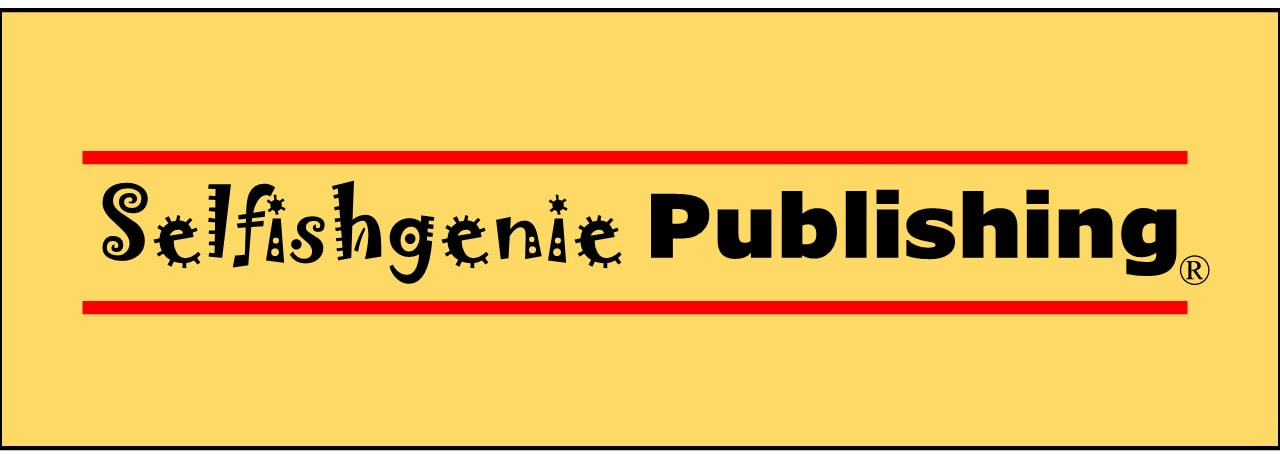
 RSS Feed
RSS Feed